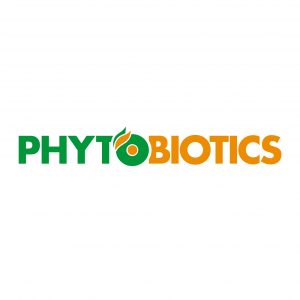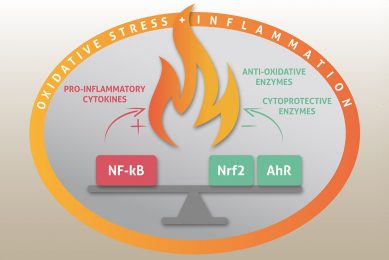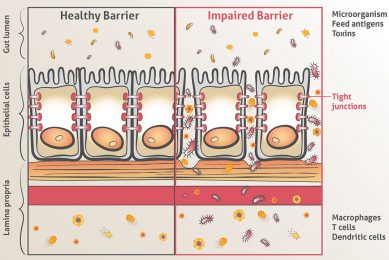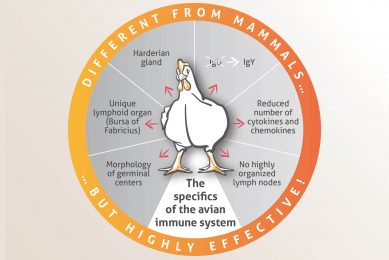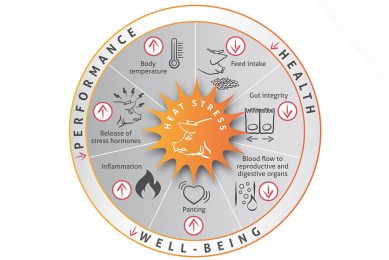Hot Talks: How dairy cow management shapes calf immunity
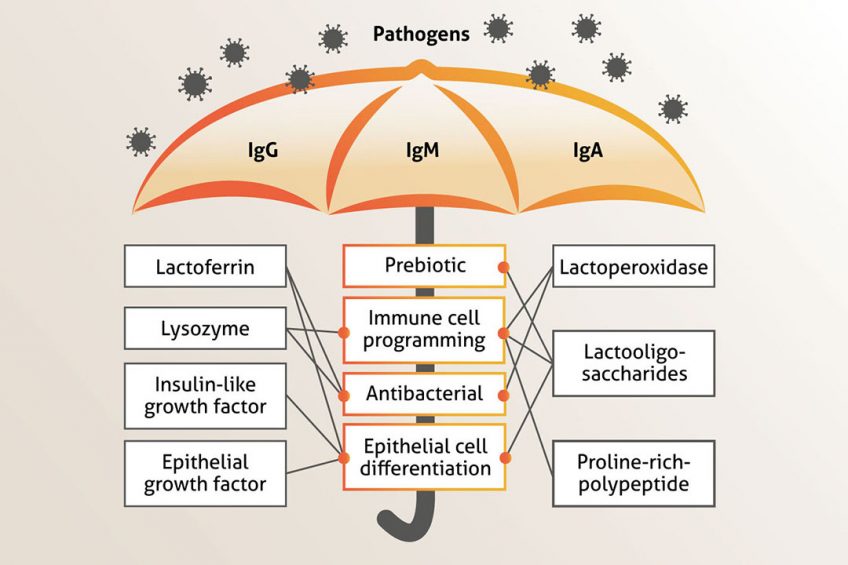
Feed additives company Phytobiotics has invited a panel of renowned experts from around the globe to share their knowledge and expertise into the interplay between the immune system, inflammation, the gut microbiota on the one hand, and animal health and performance on the other. In this article, the fifth in the series of ‘Hot Talks’, the development of the immune system in calves will be discussed.
Anja Pastor and Tobias Steiner: Good morning Prof. Schuberth, we greatly appreciate the opportunity to discuss the immune system with a special emphasis on ruminants with you.
In order to start this conversation, let us ask you a pretty general question: At what stage does the development of the immune system begin?
Hans-Joachim Schuberth: “The development of the immune system starts already during gestation. Not everything starts at once. There are waves or ‘windows’ during which certain cell types appear, or where immune organs are seeded by cells. At least near the end of gestation, the calf’s immune system is already more or less “complete” and can mount rather complex adaptive immune responses towards foreign antigens.”
Colostrum is sometimes described as “super food” for the newborn. Can you elaborate on that?
“Well, colostrum acts on so many different levels apart from just providing energy and protection by maternal antibodies. Protected by this “antibody umbrella”, a multitude of colostrum ingredients guide and promote the further development and programming of the neonates’ immune system, namely the still massively underdeveloped gut immune system. Many of the colostrum ingredients directly interact with epithelial cells and immune cells and guide them to respond in a proper and balanced way after contact with pathogens. Such balanced responses are also guided by the interaction between commensal gut bacteria and resident gut cells later in life. In this regard it’s amazing to see that several colostral ingredients act as prebiotics, favouring the development of a healthy microbiome. In sum, colostrum is a true “Swiss army knife” for the newborn.”
In your experience, how does the reality look like when it comes to feeding colostrum to newborn calves?
“To be honest, the reality is quite disappointing. Although it is well known that calves should be fed with colostrum as early as possible after parturition, that colostrum supply should be high enough, and that colostrum should be of high quality, the reality tells us that this is not the case. Even worse, in many countries, the percentage of calves with an insufficient colostrum supply increased during the last years.”
What impact does the feeding of colostrum at appropriate levels and time have on the GIT?
“Numerous publications demonstrate that the feeding of appropriate levels – let’s say 4L as opposed to 2L – has a huge impact on weight gain, health parameter and milk yields later in life. A higher colostrum volume also affects the development of the gut, its length, the structure of the mucosa and the development of the epithelial cells. If colostrum is fed early within a couple of hours after parturition this has a positive effect on the developing gut microbiome, both in terms of quantity and composition. As mentioned before, all these aspects play a role in the development and regulation of the immune system and highlight the importance of a timed feeding of appropriate colostrum levels.”
There is a strong connection between the gut and the lungs. Why is this connection important for rearing calves?
“Calves suffer mostly from diarrhoea and/or respiratory diseases. As different organs and pathogens are involved, these diseases appear to be independent entities. However, we now recognise that things happening in the gut have a pronounced influence on other organs and how the immune system acts there. Thus, it becomes obvious that healthy lungs also have their origins in a healthy gut, a proper colostrum supply and a proper feeding regime.”
Let’s talk about inflammation. Nature provides a vast source of bioactive compounds that can modulate the inflammatory response. Can the use of such compounds be recommended in young animal nutrition?
“Definitely yes. There is of course a discussion going on about the duration of supplementation, the concentrations needed, etc. However, anything that regulates the inflammatory response is very worth looking at. On the long run, even subclinical or not visible inflammation is very detrimental for any animal, but especially for the growing neonate. One of the apparent reasons is that an inflammatory-biased immune system consumes lots of energy. Apart from the brain the immune system has the next highest demand on energy in the body. Moreover, nutrients used for the immune system are not used for growth and development. Of course, we could use anti-inflammatory drugs to inhibit inflammatory responses. However, this acts at the cost of unwanted effects on the immune system or important immune mechanisms. The more sustainable approach seems to modulate inflammatory responses or to train for a balanced inflammatory response via feeding of specific plant-derived compounds, prebiotics, colostrum preparations, etc. Feeding of immunomodulatory compounds also ensures a more targeted modulation of the gut immune system, which is so important for immune responses in the whole body.”
How does the transition period of cows have an impact on the development of the immune system, gut maturation, and the performance of calves later on?
“Mostly via the partial programming of the calf’s immune system and its functionality after parturition. We recognise more and more how different transition feeding systems and stressors like heat in late pregnancy affect the immune system capability of the newborn, the gut maturation and even the performance of young cows in their first lactation.”
Lameness or chronic pain can contribute to low-grade chronic inflammatory processes. What is the connection between pain and inflammation, can you elaborate on this?
“Well, first of all pain can be the consequence of an inflammatory response. You just need to imagine how painful an arthritic joint can be. On the other hand, and that seems important here, physical or psychological pain can affect how immune cells work together or whether necessary immune mechanisms are regulated in a proper manner. The reason behind is that all immune cells carry receptors for neuropeptides and neurotransmitters which are released from nerve cells during painful events. This dialogue between neurons and the immune system drives inflammatory processes throughout the body.”
You prefer to call an immune response “right or wrong” instead of “high or low”. Why is that and can a “wrong” immune response be changed to a “right” immune response?
“When using the terms “right or wrong”, I’m looking at the endpoint of an immune response. At best, the harmful event or pathogen is eliminated with very low effort. Let’s look at a viral infection in the gut, for instance a rotavirus infection. A fast response of perfectly trained infected epithelial cells would directly inhibit the virus replication without the need to mount further, energy-costing immune responses. A wrong response would lead to infection, cell destruction and an even harmful “strong” or overshooting immune response. Sometimes, a “right” response would result in the generation of distinct IgGs – for instance IgG2 instead of IgG1. That means, not the mere generation of “antibodies” is important, but the kind of antibodies. An ongoing “wrong” immune response is not so easily changed. First, it must be inhibited and next, the animals have to be fed, treated and kept in a way that enables their tissues and their immune system to answer in a right or proper way.”
Take home message
The calf’s immune system is shaped already in the cow and a big part of the programming takes place directly after birth via colostrum. The cow and the calf integrate every impact whether via feeding, temperature, pain other stressors to guide the responsiveness of the newborn’s immune system. Calves need their mothers and our help. Do not just to protect them but educate them too!
Thank you for your time and the interview Prof. Schuberth.
Stay tuned for the 6th interview where Christine Vuong will talk about bacterial translocation and the importance of a good gut integrity.


